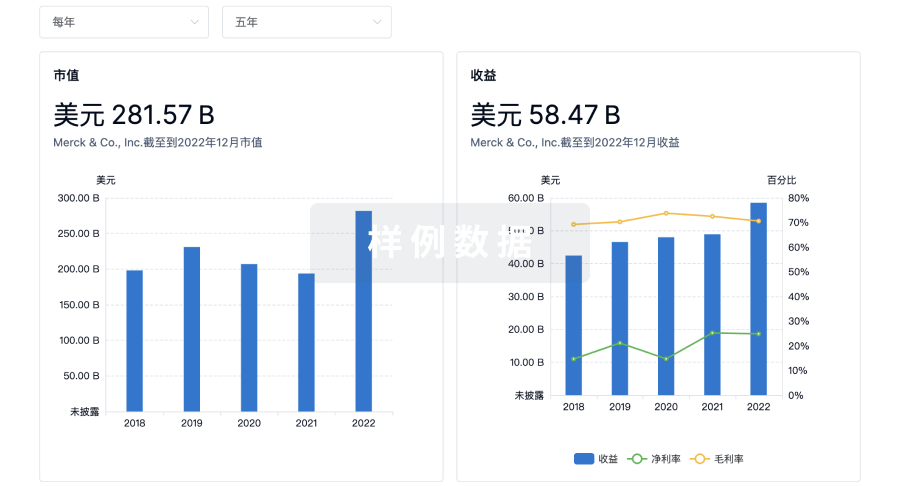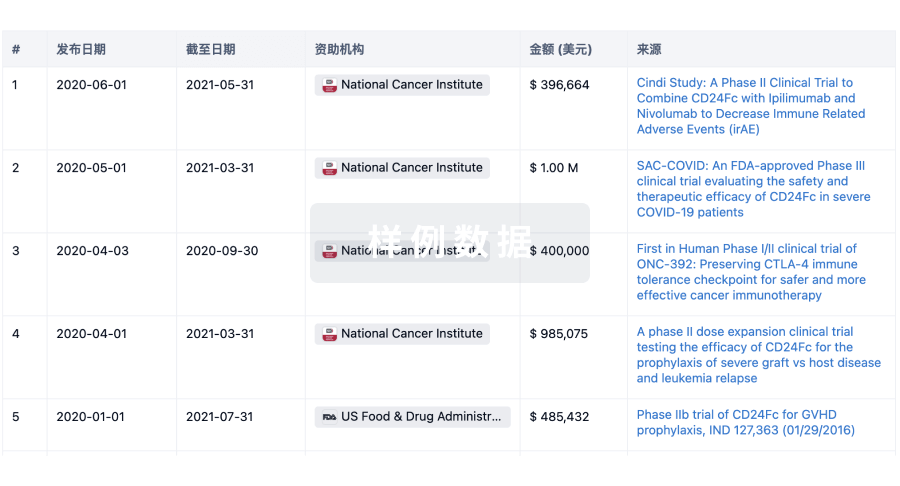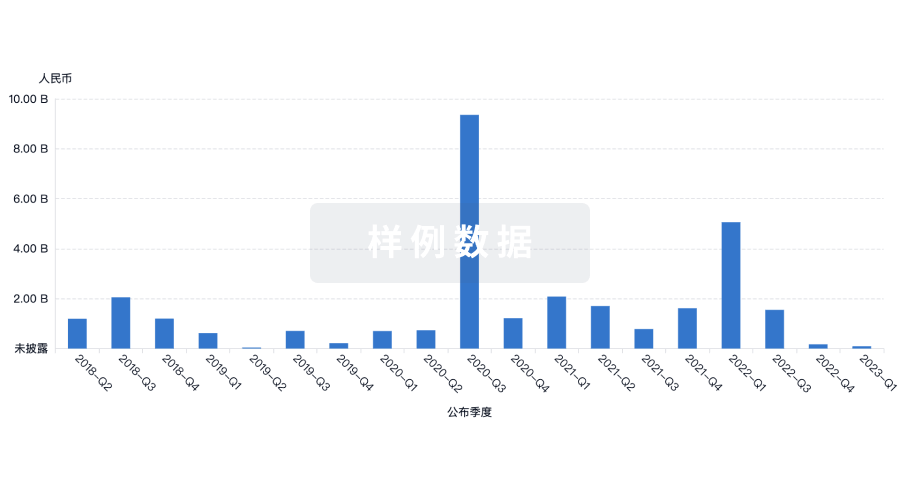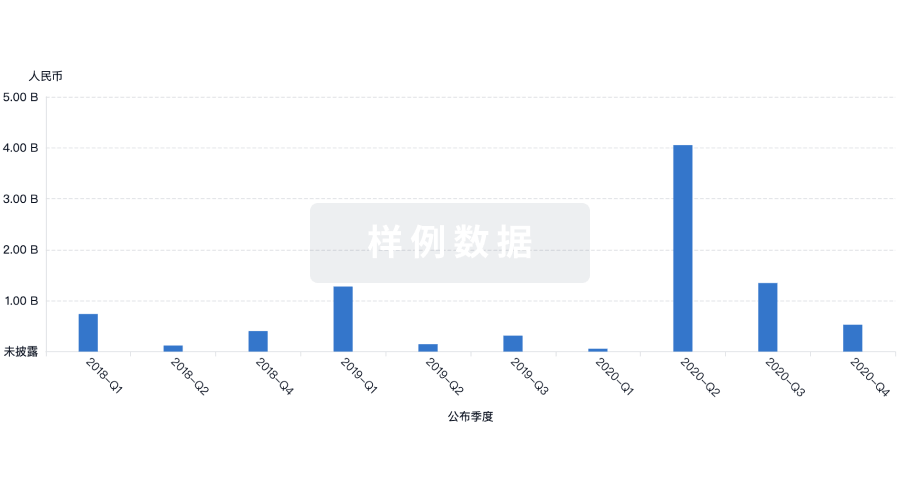预约演示
更新于:2025-06-15
Chemomab Ltd.
更新于:2025-06-15
概览
标签
消化系统疾病
其他疾病
单克隆抗体
疾病领域得分
一眼洞穿机构专注的疾病领域
暂无数据
技术平台
公司药物应用最多的技术
暂无数据
靶点
公司最常开发的靶点
暂无数据
| 疾病领域 | 数量 |
|---|---|
| 免疫系统疾病 | 1 |
| 排名前五的药物类型 | 数量 |
|---|---|
| 单克隆抗体 | 1 |
| 排名前五的靶点 | 数量 |
|---|---|
| eotaxin-2(趋化因子CCL24) | 1 |
关联
1
项与 Chemomab Ltd. 相关的药物作用机制 eotaxin-2抑制剂 |
原研机构 |
非在研适应症 |
最高研发阶段临床2期 |
首次获批国家/地区- |
首次获批日期- |
7
项与 Chemomab Ltd. 相关的临床试验NCT06210945
A Phase 2, Multicenter, Randomized, Double-Blind, Proof of Biology Study to Evaluate the Safety, Tolerability, and Activity of CM-101 in Patients With Systemic Sclerosis
This study is designed to assess the safety and tolerability of the anti-human CCL24 monoclonal antibody CM-101 in adult patients with systemic sclerosis (SSc). Approximately 45 patients at approximately 40 sites will be randomized in a 2:1 ratio to receive either 10 mg/kg CM-101 or placebo.
开始日期2024-09-01 |
申办/合作机构 |
NCT05824156
Phase 2A Multi-Center, Double-Blind, Randomized, Placebo-Controlled Study of CM-101 in Patients With Non-Alcoholic Steatohepatitis (NASH)
This phase 2a study is a multi-center, double-blind randomized, placebo-controlled study. The study is designed to determine the safety and tolerability of the anti-human CCL24 monoclonal antibody CM-101 in adult patients with non-cirrhotic nonalcoholic steatohepatitis (NASH) patients with stage 1c, 2 or 3 fibrosis. The patients will be randomized to 1 of 2 treatment groups: 5 mg/kg CM-101 or placebo.
开始日期2021-02-24 |
申办/合作机构 |
NCT04595825
A Phase 2a, Randomized, Double-Blind, Placebo-Controlled, Clinical Trial Evaluating the Safety and Efficacy of CM-101 in Subjects With Primary Sclerosing Cholangitis (The SPRING Study)
This study is designed to assess the safety, tolerability and activity of the anti-human CCL24 monoclonal antibody CM-101 in adult subjects with Primary Sclerosing Cholangitis (PSC). At least 68 subjects at approximately 50 sites will be randomized to receive either CM-101 at doses of 10 mg/kg or 20 mg/kg or matching placebo.
开始日期2020-10-01 |
申办/合作机构 |
100 项与 Chemomab Ltd. 相关的临床结果
登录后查看更多信息
0 项与 Chemomab Ltd. 相关的专利(医药)
登录后查看更多信息
4
项与 Chemomab Ltd. 相关的文献(医药)2019-09-01·Annals of the rheumatic diseases1区 · 医学
Blockade of CCL24 with a monoclonal antibody ameliorates experimental dermal and pulmonary fibrosis
1区 · 医学
Article
作者: Levi, Yair ; Segal Salto, Michal ; Barashi, Neta ; Katav, Avi ; Edelshtein, Victoria ; George, Jacob ; Mor, Adi ; Manetti, Mirko ; Matucci-Cerinic, Marco
Objectives:
We aimed to assess the expression of the CCL24 chemokine in systemic sclerosis (SSc) and to evaluate the possible pathogenic implications of the CCL24/CCR3 axis using both in vitro and in vivo models. We further investigated the efficacy of an anti-CCL24 monoclonal antibody (mAb), CM-101, in inhibiting cell activation as well as dermal and pulmonary inflammation and fibrosis in experimental animal models.
Methods:
We used ELISA and fluorescence immunohistochemistry to determine CCL24 levels in serum and CCL24/CCR3 expression in skin biopsies of SSc patients. Skin fibroblasts and endothelial cells treated with CCL24 or SSc serum with or without CM-101 were used to follow cell activation and differentiation. Prevention and treatment in vivo bleomycin (BLM)-induced models were used to evaluate experimental dermal and pulmonary fibrosis progression following treatment with the CM-101 mAb.
Results:
CCL24 circulating levels were significantly elevated in SSc patients. CCL24/CCR3 expression was strongly increased in SSc skin. Blockade of CCL24 with CM-101 significantly reduced the activation of dermal fibroblasts and their transition to myofibroblasts induced by SSc serum. CM-101 was also able to significantly inhibit endothelial cell activation induced by CCL24. In BLM-induced experimental animal models, CM-101 profoundly inhibited both dermal and pulmonary fibrosis and inflammation.
Conclusions:
CCL24 plays an important role in pathological processes of skin and lung inflammation and fibrosis. Inhibition of CCL24 by CM-101 mAb can be potentially beneficial for therapeutic use in SSc patients.
2018-01-01·Pain research & management3区 · 医学
Elevated Levels of Eotaxin-2 in Serum of Fibromyalgia Patients
3区 · 医学
ArticleOA
作者: Elkayam, Ori ; Furer, Victoria ; Segal, Michal ; Mor, Adi ; Katav, Avi ; George, Jacob ; Aloush, Valerie ; Hazan, Eyal ; Ablin, Jacob N.
FMS patients demonstrate an altered profile of chemokines relative to healthy controls (HC). Eotaxin-2 is a potent chemoattractant distributed in a variety of tissues. The aim of the study was to compare serum levels of eotaxin-2 between FMS patients and HC and to examine a potential correlation between eotaxin-2 levels and clinical parameters of FMS. Methods. 50 patients with FMS and 15 HC were recruited. Data on the severity of FMS symptoms and depression were collected. Serum levels of eotaxin-2 (ELISA) were determined in all participants. High-sensitive CRP (hs-CRP) was measured in the FMS group. Results. The FMS cohort included predominantly females (84%), mean age of 49, and mean disease duration of 6 years. FMS patients exhibited significantly higher eotaxin-2 levels (pg/ml) versus HC: 833 (±384) versus 622 (±149), p = 0.04
2013-01-01·World Journal of Cardiovascular Diseases
Anti eotaxin-2 antibodies attenuate the initiation and progression of experimental atherosclerosis
作者: Entin-Meer, Michal ; Mor, Adi ; Afek, Arnon ; Keren, Gad ; George, Jacob
The chemokine eotaxin-2 is a potent chemoattractant for inflammatory cells, the predominants of which are eosinophils.Human and murine atherosclerotic plaques are known to exhibit inflammatory phenotypes where a complex interaction of cytokine and chemokines plays a role.We tested the hypothesis that eotaxin-2 (eo-2) plays a causative role in the initiation and progression of exptl. atherosclerosis.Methods and Results: Sera collected from atherosclerotic ApoE knockout (KO) mice, exhibited significantly higher levels of eo-2 compared to sera collected from their background age matched C57BL/6 litters by ELISA.Moreover, levels of eo-2 were higher in old atherosclerotic ApoE KO mice than in young animals.Similarly, the expression level of the eo-2 receptor, CCR3, was increased in splenocytes of old ApoE compared to the young littermates.Administration of polyclonal blocking antibodies to eotaxin-2 resulted in a significant reduction of early atherosclerotic plaques in ApoE KO mice whereas prolonged treatment of mice with advanced plaques led to atheroma stabilization.A monoclonal antibody (D8) prepared against eo-2 attenuated adhesion of lymphocytes to fibronectin and potently inhibited their migration towards VEGF.Monoclonal blocking antibodies to eo-2 also significantly reduced atherosclerotic plaques in ApoE KO mice.Conclusion: Eo-2 serum levels are elevated in sera of ApoE KO mice with exptl. atherosclerosis and its blockade is associated with reduced fatty streak accumulation and increased plaque stabilization.
11
项与 Chemomab Ltd. 相关的新闻(医药)2024-05-17
TEL AVIV, Israel, May 17, 2024 (GLOBE NEWSWIRE) -- Chemomab Therapeutics Ltd. (Nasdaq: CMMB) (Chemomab), a clinical stage biotechnology company developing innovative therapeutics for fibro-inflammatory diseases with high unmet need, today announced upcoming scientific presentations at the Gordon Research Conference on Chemotactic Cytokines and at EASL 2024, the Annual Congress of the European Association for the Study of the Liver. The presentations cover a range of topics, from new preclinical studies further elucidating the roles of the soluble protein target CCL24 and Chemomab’s CCL24 neutralizing antibody CM-101 in fibro-inflammatory disease, to novel translational research designed to support the ongoing clinical development of CM-101 for primary sclerosing cholangitis, a rare and often fatal fibrotic liver disease. The presentations will be made available and described in greater detail post embargo. Gordon Research Conference: Chemotactic Cytokines - Portland, Maine, USA, June 2-7, 2024 Date:June 2-7, 2024Format:Poster presentation: Attenuating liver fibrosis and inflammation: blocking CCL24 inhibits recruitment of hepatic stellate cells, monocytes and neutrophils and modulates hepatic stellate cell activationPresenter:Prof. Amnon Peled, Hadassah University Hospital; Faculty of Medicine, Hebrew UniversityInformation:2024 Chemotactic Cytokines Conference GRC EASL Congress 2024 – Milan, Italy, June 5-8, 2024 Date:June 6, 2024Time:8:30-18:00 CESTFormat:Poster presentation: Ex-vivo translational assay of hepatic stellate cells using patient- derived serum characterizes the anti-fibrotic activity of CM-101Presenter:Revital Aricha, PhD, Vice President, Translational Science, Chemomab TherapeuticsSession:Poster - Fibrosis/Stellate cell biology, Abstract #380 Date:June 6, 2024Time:8:30-17:00 CESTFormat:Poster presentation: Machine learning-driven identification of serum protein signature for primary sclerosing cholangitis and enhanced liver fibrosis scorePresenter: Ilan Vaknin, PhD, Vice President, R&D, Chemomab TherapeuticsSession:Immune-mediated and cholestatic: Experimental and pathophysiology, Abstract #1032 Date:June 7, 2024Time:12:25-13:45 CESTFormat:Poster Tour: Ex-vivo translational assay of hepatic stellate cells using patient-derived serum characterizes the anti-fibrotic activity of CM-101Presenter:Ilan Vaknin, PhD, Vice President, R&D, Chemomab TherapeuticsSession:Fibrosis/Stellate Cell Biology Poster Tour, Abstract #380Location:Basic Science Track HubInformation:EASL Congress 2024 In addition, Chemomab Corporate Development will be in San Diego June 3-6, 2024, participating in the BIO International Convention’s One-on-One Partnering™ event. Registered attendees can click here to log in and schedule a meeting with Chemomab. About Chemomab Therapeutics Ltd.Chemomab is a clinical stage biotechnology company developing innovative therapeutics for fibro-inflammatory diseases with high unmet need. Based on the unique and pivotal role of CCL24 in promoting fibrosis and inflammation, Chemomab developed CM-101, a monoclonal antibody that neutralizes CCL24 activity. In clinical and preclinical studies, CM-101 appears safe, with the potential to treat multiple severe and life-threatening fibro-inflammatory diseases. Chemomab has reported positive results from three clinical trials of CM-101 in patients, including a Phase 2a liver fibrosis trial in NASH patients and an investigator-initiated study in patients with severe lung injury. A Phase 2 trial in primary sclerosing cholangitis has completed patient enrollment, with topline data expected midyear 2024. Chemomab’s CM-101 program for the treatment of systemic sclerosis is Phase 2-ready with an open U.S. IND. For more information about Chemomab, visit chemomab.com. Contacts: Media & Investors:Chemomab TherapeuticsBarbara LindheimConsulting Vice PresidentInvestor & Public Relations, Strategic CommunicationsPhone: +1 917-355-9234barbara.lindheim@chemomab.com IR@chemomab.com
临床2期临床结果
2024-05-17
TEL AVIV, Israel, May 17, 2024 (GLOBE NEWSWIRE) -- Chemomab Therapeutics Ltd. (Nasdaq: CMMB) (Chemomab), a clinical stage biotechnology company developing innovative therapeutics for fibro-inflammatory diseases with high unmet need, today announced upcoming scientific presentations at the Gordon Research Conference on Chemotactic Cytokines and at EASL 2024, the Annual Congress of the European Association for the Study of the Liver.
The presentations cover a range of topics, from new preclinical studies further elucidating the roles of the soluble protein target CCL24 and Chemomab’s CCL24 neutralizing antibody CM-101 in fibro-inflammatory disease, to novel translational research designed to support the ongoing clinical development of CM-101 for primary sclerosing cholangitis, a rare and often fatal fibrotic liver disease. The presentations will be made available and described in greater detail post embargo.
Gordon Research Conference: Chemotactic Cytokines - Portland, Maine, USA, June 2-7, 2024
Date:
June 2-7, 2024
Format:
Poster presentation: Attenuating liver fibrosis and inflammation: blocking CCL24 inhibits
recruitment of hepatic stellate cells, monocytes and neutrophils and modulates hepatic
stellate cell activation
Presenter:
Prof. Amnon Peled, Hadassah University Hospital; Faculty of Medicine, Hebrew University
Information:
2024 Chemotactic Cytokines Conference GRC
EASL Congress 2024 – Milan, Italy, June 5-8, 2024
Date:
June 6, 2024
Time:
8:30-18:00 CEST
Format:
Poster presentation: Ex-vivo translational assay of hepatic stellate cells using patient-
derived serum characterizes the anti-fibrotic activity of CM-101
Presenter:
Revital Aricha, PhD, Vice President, Translational Science, Chemomab Therapeutics
Session:
Poster - Fibrosis/Stellate cell biology, Abstract #380
Date:
June 6, 2024
Time:
8:30-17:00 CEST
Format:
Poster presentation: Machine learning-driven identification of serum protein signature for
primary sclerosing cholangitis and enhanced liver fibrosis score
Presenter:
Ilan Vaknin, PhD, Vice President, R&D, Chemomab Therapeutics
Session:
Immune-mediated and cholestatic: Experimental and pathophysiology, Abstract #1032
Date:
June 7, 2024
Time:
12:25-13:45 CEST
Format:
Poster Tour: Ex-vivo translational assay of hepatic stellate cells using patient-derived serum
characterizes the anti-fibrotic activity of CM-101
Presenter:
Ilan Vaknin, PhD, Vice President, R&D, Chemomab Therapeutics
Session:
Fibrosis/Stellate Cell Biology Poster Tour, Abstract #380
Location:
Basic Science Track Hub
Information:
EASL Congress 2024
In addition, Chemomab Corporate Development will be in San Diego June 3-6, 2024, participating in the BIO International Convention’s One-on-One Partnering™ event. Registered attendees can click here to log in and schedule a meeting with Chemomab.
About Chemomab Therapeutics Ltd.
Chemomab is a clinical stage biotechnology company developing innovative therapeutics for fibro-inflammatory diseases with high unmet need. Based on the unique and pivotal role of CCL24 in promoting fibrosis and inflammation, Chemomab developed CM-101, a monoclonal antibody that neutralizes CCL24 activity. In clinical and preclinical studies, CM-101 appears safe, with the potential to treat multiple severe and life-threatening fibro-inflammatory diseases. Chemomab has reported positive results from three clinical trials of CM-101 in patients, including a Phase 2a liver fibrosis trial in NASH patients and an investigator-initiated study in patients with severe lung injury. A Phase 2 trial in primary sclerosing cholangitis has completed patient enrollment, with topline data expected midyear 2024. Chemomab’s CM-101 program for the treatment of systemic sclerosis is Phase 2-ready with an open U.S. IND. For more information about Chemomab, visit chemomab.com.
Contacts:
Media & Investors:
Chemomab Therapeutics
Barbara Lindheim
Consulting Vice President
Investor & Public Relations,
Strategic Communications
Phone: +1 917-355-9234
barbara.lindheim@chemomab.com
IR@chemomab.com
临床2期临床结果
2023-01-05
昨日(1月3日),以色列制药公司Chemomab宣布该公司的CCL24单抗CM-101在IIa期临床中达到了其在非酒精性脂肪性肝炎(NASH)中的安全性和耐受性的主要终点,并实现了一系列肝纤维化生物标志物的次要终点。
次要终点包括ProC-3、ProC-4、ProC-18、TIMP-1和ELF等肝纤维化相关生物标志物改善,治疗第20周60%的患者至少有3个生物标志物改善,而对照组这一比例为0。此外,非盲数据还显示,与安慰剂治疗的患者相比,CM-101治疗组的患者具有更高的纤维化基线水平。
虽然说,此次临床用的并不是此前Resmetirom那样采用了FDA肝活检的金标准,而是通过FibroScan的非侵入性弹性成像方法评估肝纤维化程度,不过从机理上来看CM-101这一CCL24单抗似乎在一些纤维化和炎症疾病具有普遍适用性。从Chemomab公司的管线来看也可以应证这一点。
CM-101的作用机理
C基序趋化因子配体24 (CCL24或嗜酸性粒细胞趋化因子-2)是一种趋化因子,主要通过C-C基序趋化因子受体3 (CCR3)复合物促进细胞运输并调节炎症和纤维化活性。已知趋化因子由活化的T细胞、单核细胞、上皮细胞和内皮细胞以及活化的成纤维细胞表达。
CCL24诱导ccr3表达细胞趋化和激活,包括免疫细胞和成纤维细胞,且能刺激人类肺成纤维细胞增殖和胶原合成,并被发现与特发性肺纤维化的进展有关。CM-101目前已经在多个炎症相关临床前模型中证明了有效性,其中包括系统性硬化症,肝纤维化模型,动脉粥样硬化模型,类风湿性关节炎和脑脊髓炎。
特别是在肝纤维化中,CCL24及其受体CCR3在NAFLD和NASH患者的肝脏和外周血细胞中显著表达。CCL24和CCR3在NASH患者肝脏的实质和非实质细胞中广泛表达,并且不仅仅由免疫细胞表达。使用实验性MCD诱导的NASH模型Ccl24敲除小鼠更表明,相比于WT(野生型小鼠)对照,在没有CCL24的情况下,疾病参数的强烈衰减表明,CCL24-CCR3轴可能在调节肝脏损伤中涉及的炎性纤维化轴中具有重要作用。
更深入的研究则进一步揭示了其具体机制,根据CCR3和α-SMA在肝成纤维细胞上的共定位,人LX2细胞表达CCR3,从而使这些细胞能够感知和应答CCL24。CCL24能够诱导肝成纤维细胞等细胞的活化。而研究人员开发的CCL24封闭抗体CM-101则能够通过降低运动性、α-SMA表达和前胶原1分泌来阻断CCL24诱导的活化。这些结果表明,CM-101治疗可以减轻肝星状细胞激活,从而潜在地减轻在实验模型中和最终在患者中看到的纤维化损伤。
还能治疗新冠病毒导致的严重肺损伤!?
由新冠病毒感染肺部引起的肺部炎症的一些潜在机制类似于在涉及肺部炎症和纤维化的慢性疾病中看到的机制,在去年9月时,Chemomab公司公布了在16名患有严重呼吸系统疾病的成年新冠肺炎患者中施用CM-101的初步疗效。
对这种急性疾病患者群体施用CM-101被发现是安全且耐受性良好的。CM-101暴露和目标参与情况类似于Chemomab研究人员在以前的CM-101临床研究中看到的情况。重要的是,在用CM-101治疗后,观察到肺部炎症、纤维形成和嗜中性粒细胞活性的血清生物标记物快速减少。
Chemomab方面认为这项研究证实并扩展了CM-101的安全性和耐受性,并证明了与肺部炎症和纤维化相关的生物标志物的临床相关变化。研究人员相信这些结果增加了表明CM-101具有减轻肺部炎症和纤维化的潜力的数据,进一步加强了用该药物治疗系统性硬化症患者的理论基础。
小编总结
从具体市场看好程度来看,CM-101虽然在盘前上涨了63%,但随后立即回落,相比于样本量巨大,全部采用了金标准肝活检的Resmetirom不可相提并论。总的来说,CM-101的临床也只是处于起步阶段展示了一些初步的临床数据,想要验证有效性可能还有较长的路要走。不过有介于其在各个纤维化疾病的普遍性适用可能性,这可能使得这一靶点引来更多Followers。
参考来源:Segal-Salto M, Barashi N, Katav A, Edelshtein V, Aharon A, Hashmueli S, George J, Maor Y, Pinzani M, Haberman D, Hall A, Friedman S, Mor A. A blocking monoclonal antibody to CCL24 alleviates liver fibrosis and inflammation in experimental models of liver damage. JHEP Rep. 2020 Jan 2;2(1):100064. doi: 10.1016/j.jhepr.2019.100064. PMID: 32039405; PMCID: PMC7005554.
https://investors.chemomab.com/2023-01-03-Chemomab-Reports-Top-Line-Results-from-CM-101-Phase-2a-Liver-Fibrosis-Biomarker-Trial-in-NASH-Patients
内容来源于网络,如有侵权,请联系删除。
临床2期临床结果
100 项与 Chemomab Ltd. 相关的药物交易
登录后查看更多信息
100 项与 Chemomab Ltd. 相关的转化医学
登录后查看更多信息
组织架构
使用我们的机构树数据加速您的研究。
登录
或

管线布局
2025年07月18日管线快照
管线布局中药物为当前组织机构及其子机构作为药物机构进行统计,早期临床1期并入临床1期,临床1/2期并入临床2期,临床2/3期并入临床3期
临床2期
1
1
其他
登录后查看更多信息
当前项目
| 药物(靶点) | 适应症 | 全球最高研发状态 |
|---|---|---|
Nebokitug ( eotaxin-2 ) | 原发性硬化性胆管炎 更多 | 临床2期 |
CM-301 ( CCL5 x CCR3 x eotaxin-1 ) | 自身免疫性疾病 更多 | 无进展 |
登录后查看更多信息
药物交易
使用我们的药物交易数据加速您的研究。
登录
或

转化医学
使用我们的转化医学数据加速您的研究。
登录
或

营收
使用 Synapse 探索超过 36 万个组织的财务状况。
登录
或

科研基金(NIH)
访问超过 200 万项资助和基金信息,以提升您的研究之旅。
登录
或

投资
深入了解从初创企业到成熟企业的最新公司投资动态。
登录
或

融资
发掘融资趋势以验证和推进您的投资机会。
登录
或

Eureka LS:
全新生物医药AI Agent 覆盖科研全链路,让突破性发现快人一步
立即开始免费试用!
智慧芽新药情报库是智慧芽专为生命科学人士构建的基于AI的创新药情报平台,助您全方位提升您的研发与决策效率。
立即开始数据试用!
智慧芽新药库数据也通过智慧芽数据服务平台,以API或者数据包形式对外开放,助您更加充分利用智慧芽新药情报信息。
生物序列数据库
生物药研发创新
免费使用
化学结构数据库
小分子化药研发创新
免费使用
